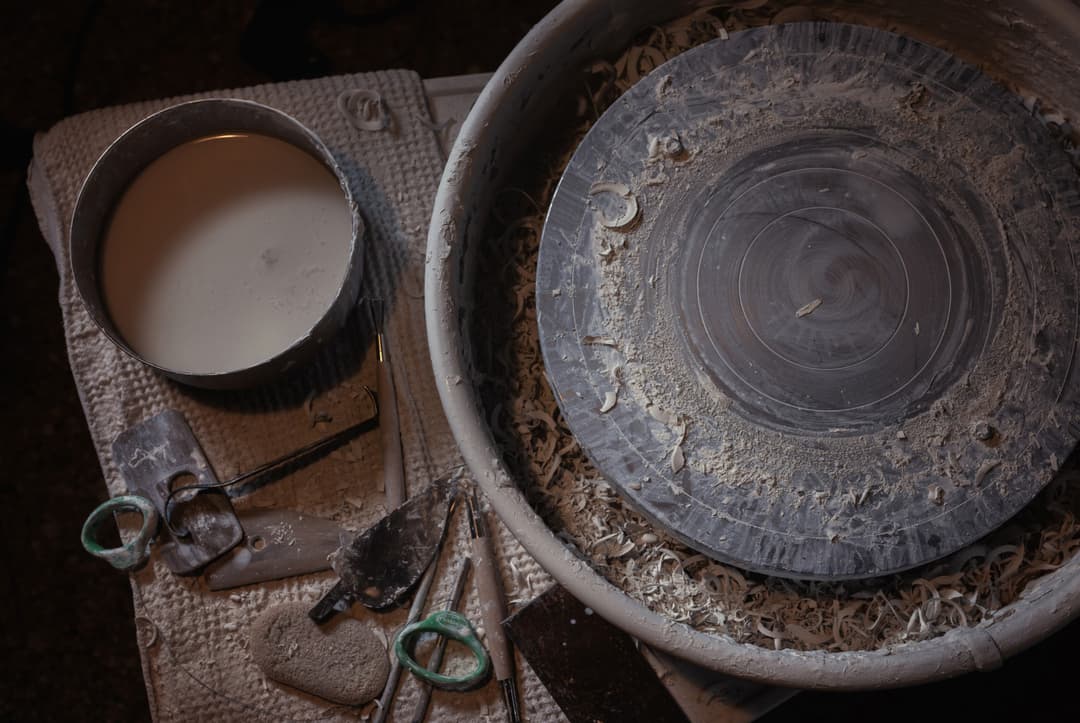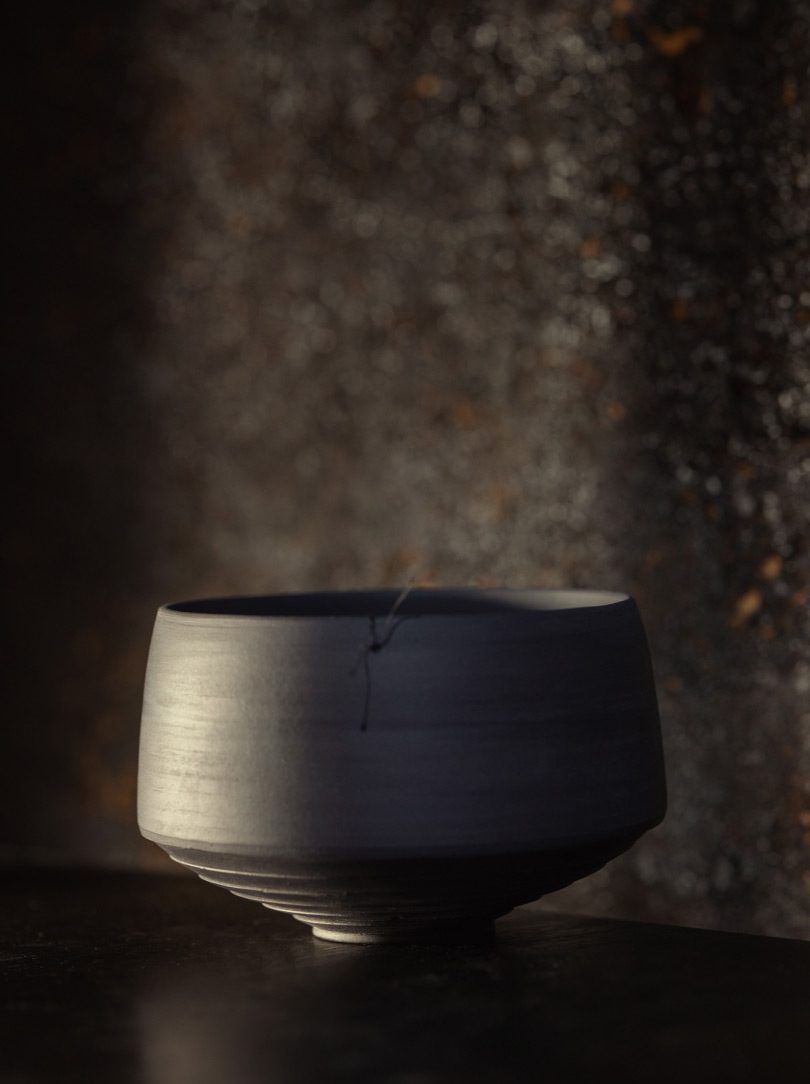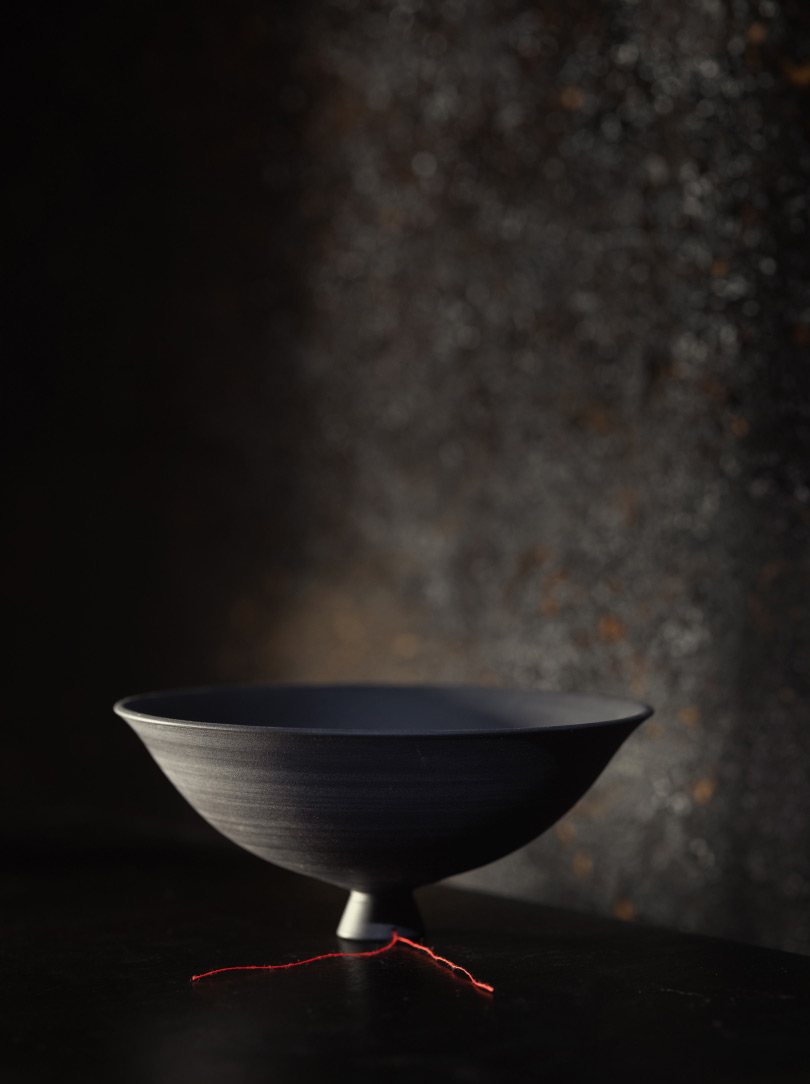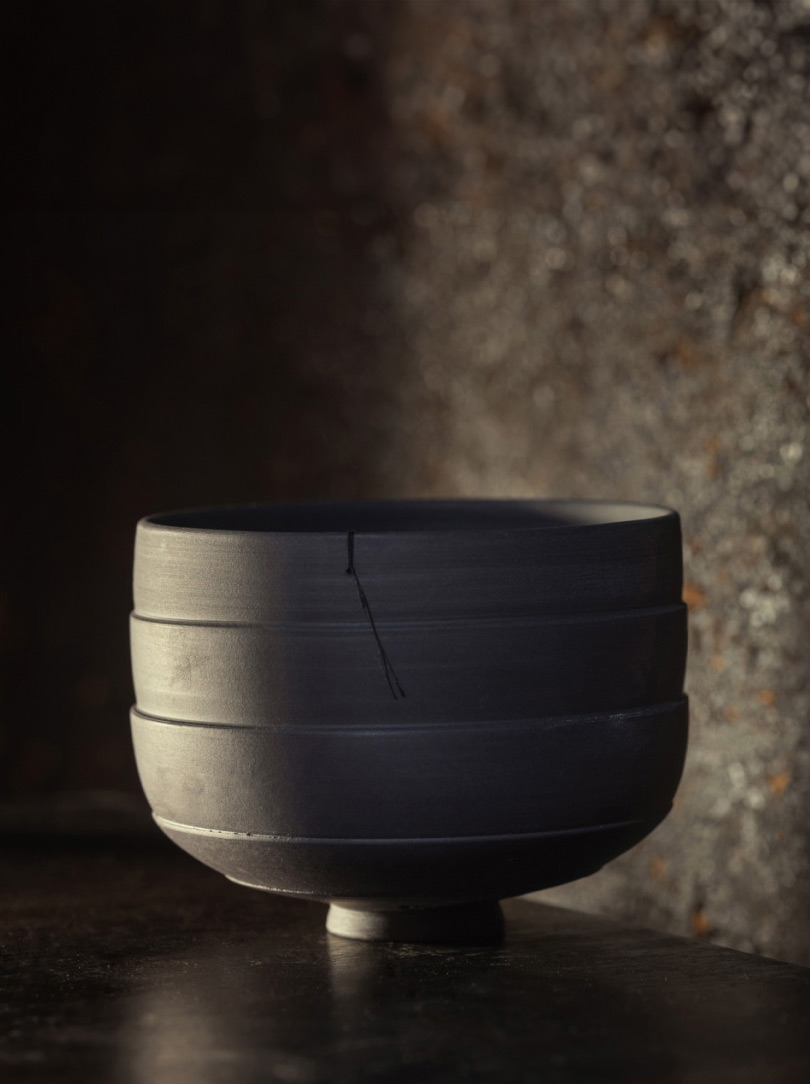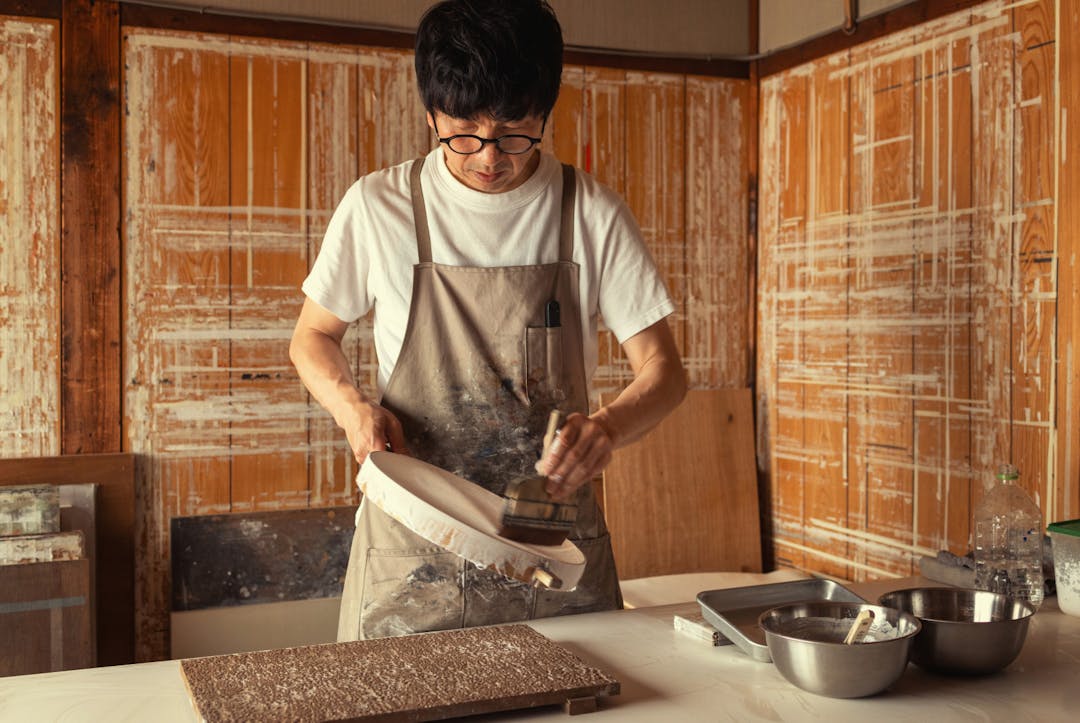
Play Movie
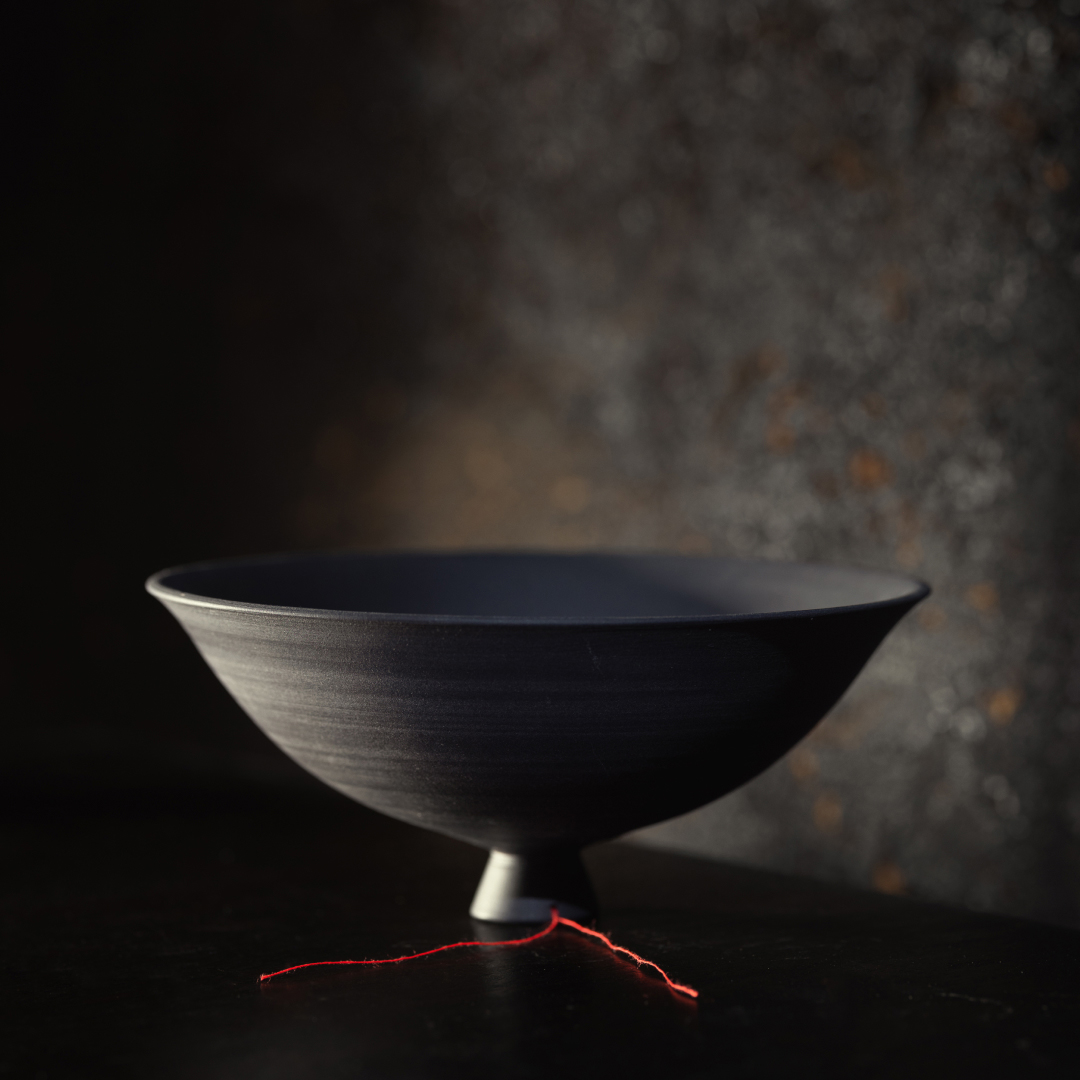
Listen
to Katherine Kennard
reading this story
Unique ceramic art made in Switzerland
Helga Ritsch
To allow herself to live and work as freely as possible, Swiss ceramic artist Helga Ritsch has retreated into a four-hundred-year-old house in a village of three hundred and something inhabitants. There, she has found the peace and the pace she needs to sculpt unique pieces that reflect her own personality.
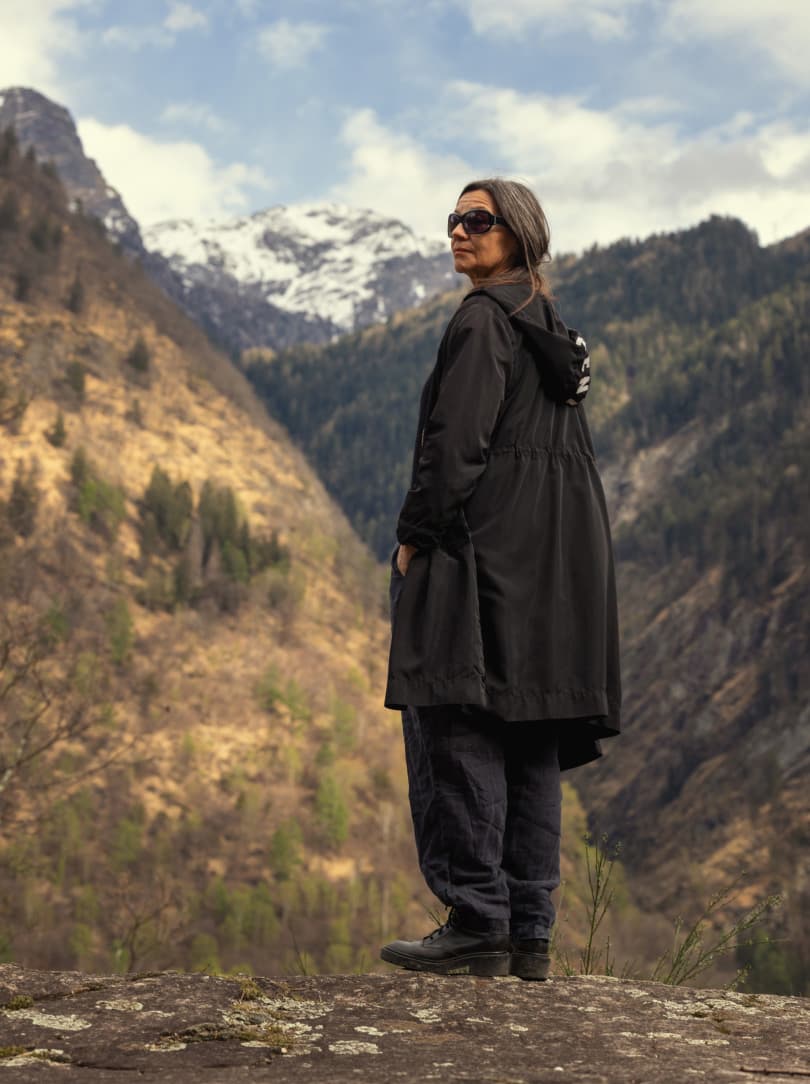
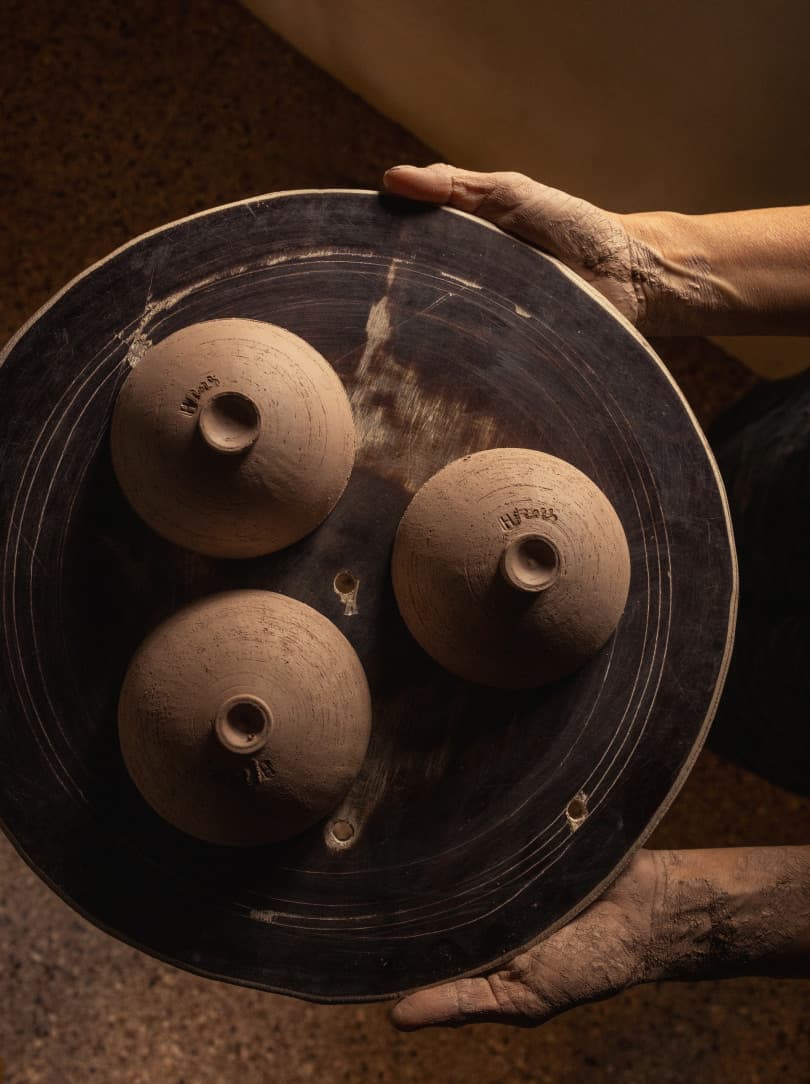
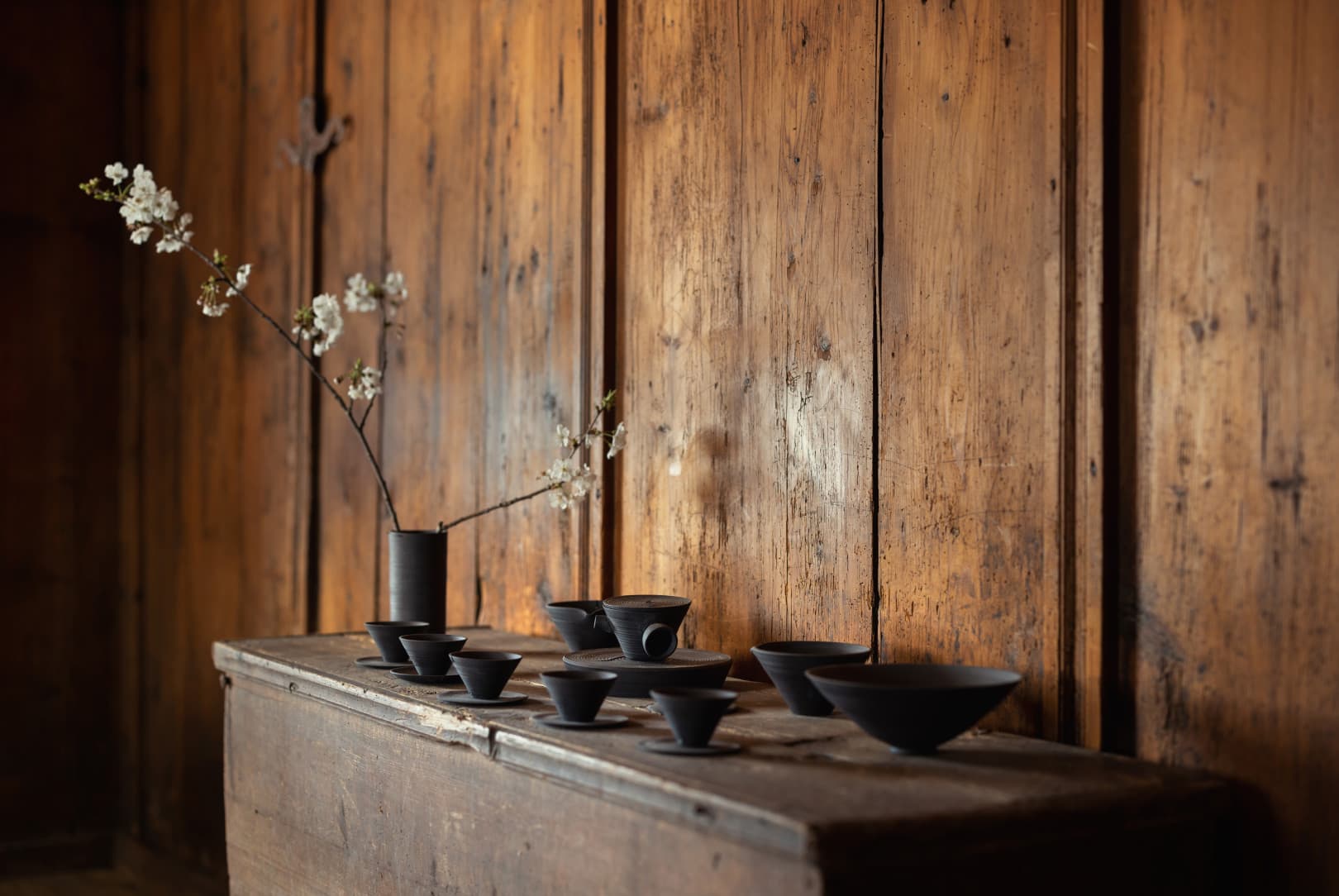
Soazza, a hamlet hidden in the south of the Grisons between Bellinzona and the San Bernardino Pass, is a village of shadows. Here, in the middle of the Misox valley, days are short and sunshine is a precious good. The place also has a number of grand stately homes lining the narrow streets and pathways, along with the tall townhouses. With its unique rustic charm, this one-horse town always ranks highly in lists naming the most beautiful places in all of Switzerland. In Soazza, it appears, time has been standing still for quite a while.
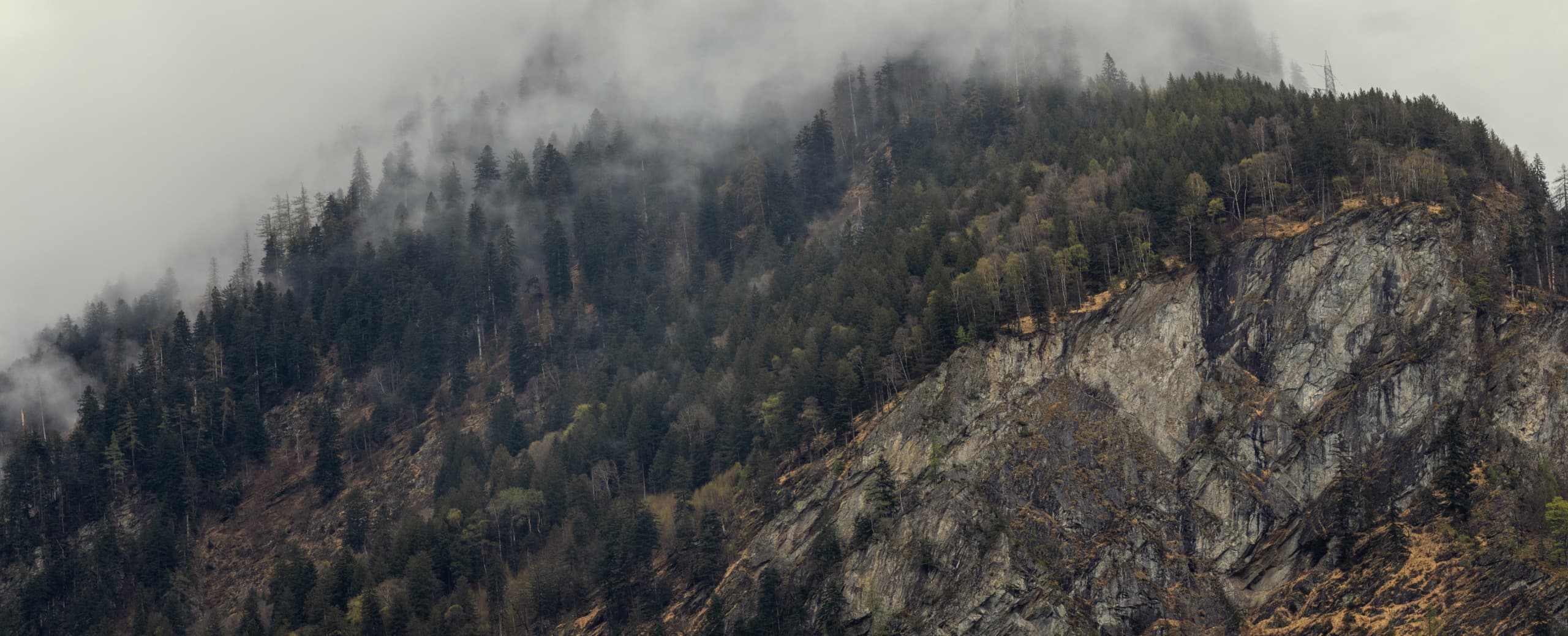
On a journey south, should one be tempted to take a right after the San Bernardino Tunnel for a detour to Soazza and a look at the San Martino Church, it is entirely possible to get an idea of what rural life must have looked like in this green and rocky region a couple of centuries ago. Chances are you might even spot one of Soazza’s locals, one of its many shadows, a figure moving through the main street, maybe carrying a carafe filled with fresh spring water from the nearby creek, maybe walking a Tibetan Apso. And before you know it, that person dressed in loose, earthy-coloured garments made from natural fabrics vanishes as quickly as she appeared, passing a stony house entrance with white edging and slipping through a wooden door into a building that is very hard to miss. With its appealing oddity and weathered beauty, this stone edifice at the edge of the village is brimming with history.
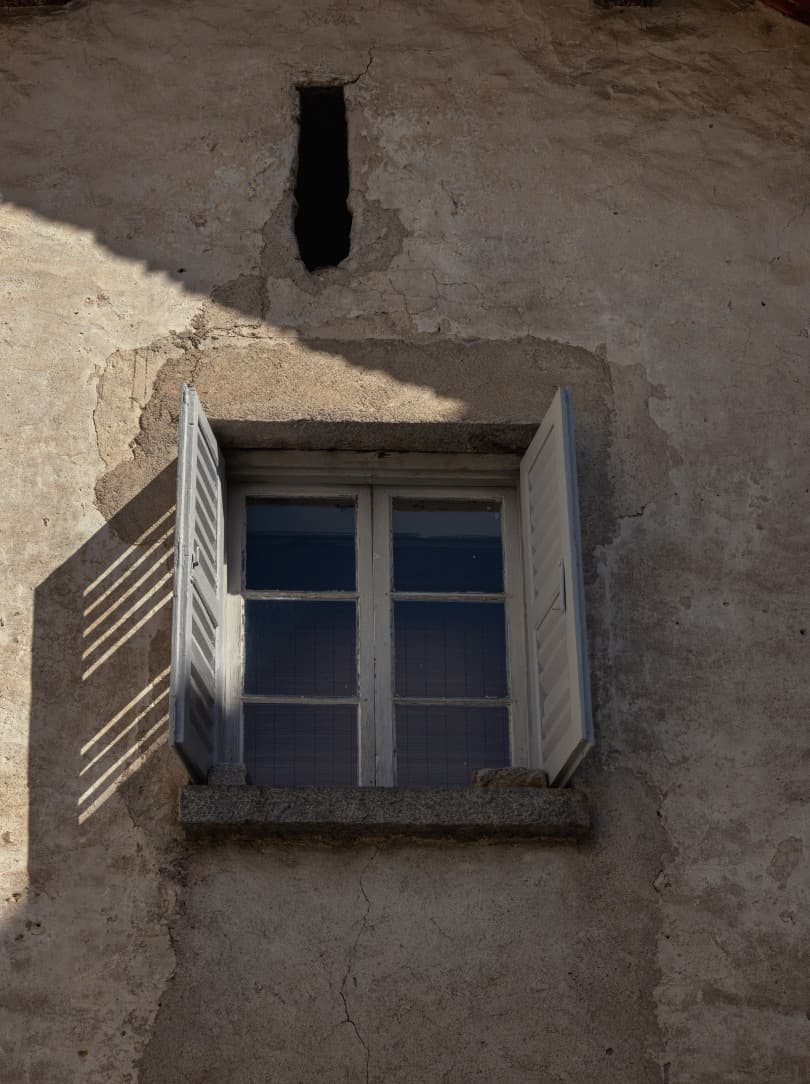



Now, let us assume one would decide to follow this woman into that ominous, dimly lit, sepulchral dwelling, as we have done on several occasions. Chances are, you will marvel at and wonder about some of the same things we marvel at and wonder about during our visits. For instance, you might run into a family of nine small cups close to the door in a room on the ground floor. These siblings are hand-thrown from stoneware and partly coated with black engobe, a mixture of clay and water. Someone has neatly placed this delicate group of objects in a three-by-three grid atop an ashlar pedestal in a rather peculiar fashion, the outer cups balancing dangerously on the edges and at the four corners of the knee-high podium, which is painted with acrylic.
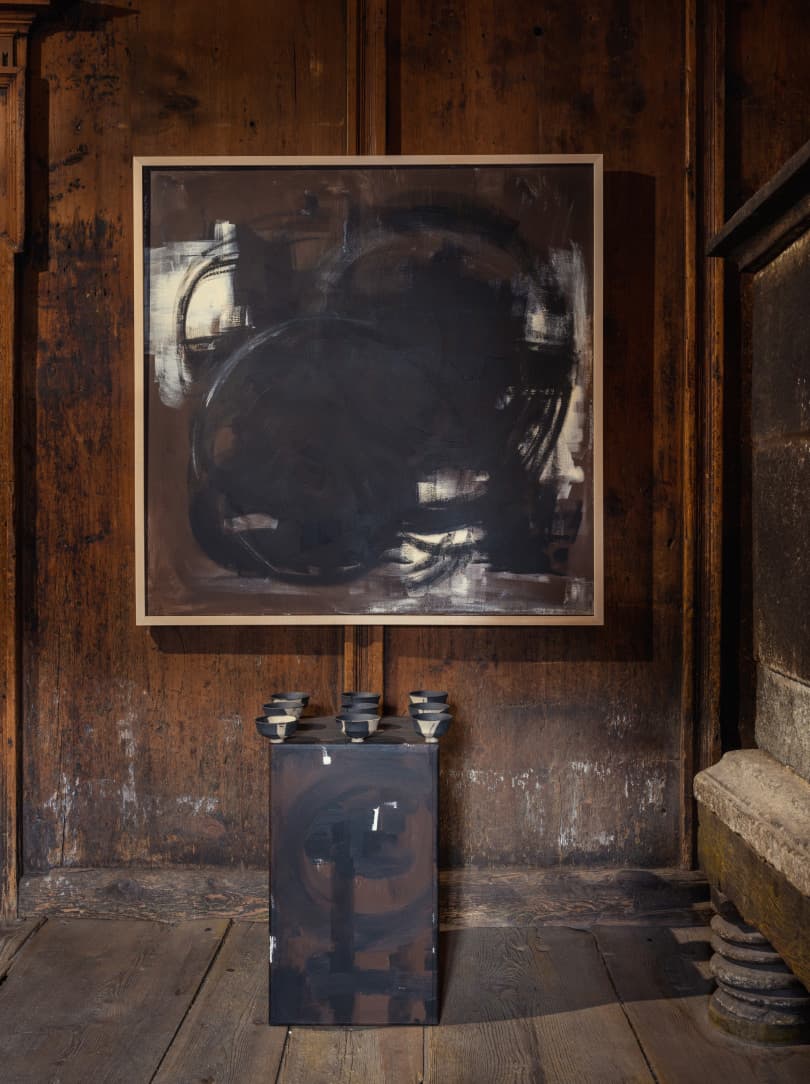


Naturally, every step you take towards the ensemble causes the creaky floorboards to tremble, making the wooden stage tremble ever so slightly as well. So, you advance slowly, carefully, approaching the objects like you would a toddler sleeping peacefully in its cradle. You do not want to break the silence, let alone the ceramic beauties. And then, just when you have come to a stop, you hear her calm voice: “I placed them there intentionally. I want you to be afraid.”
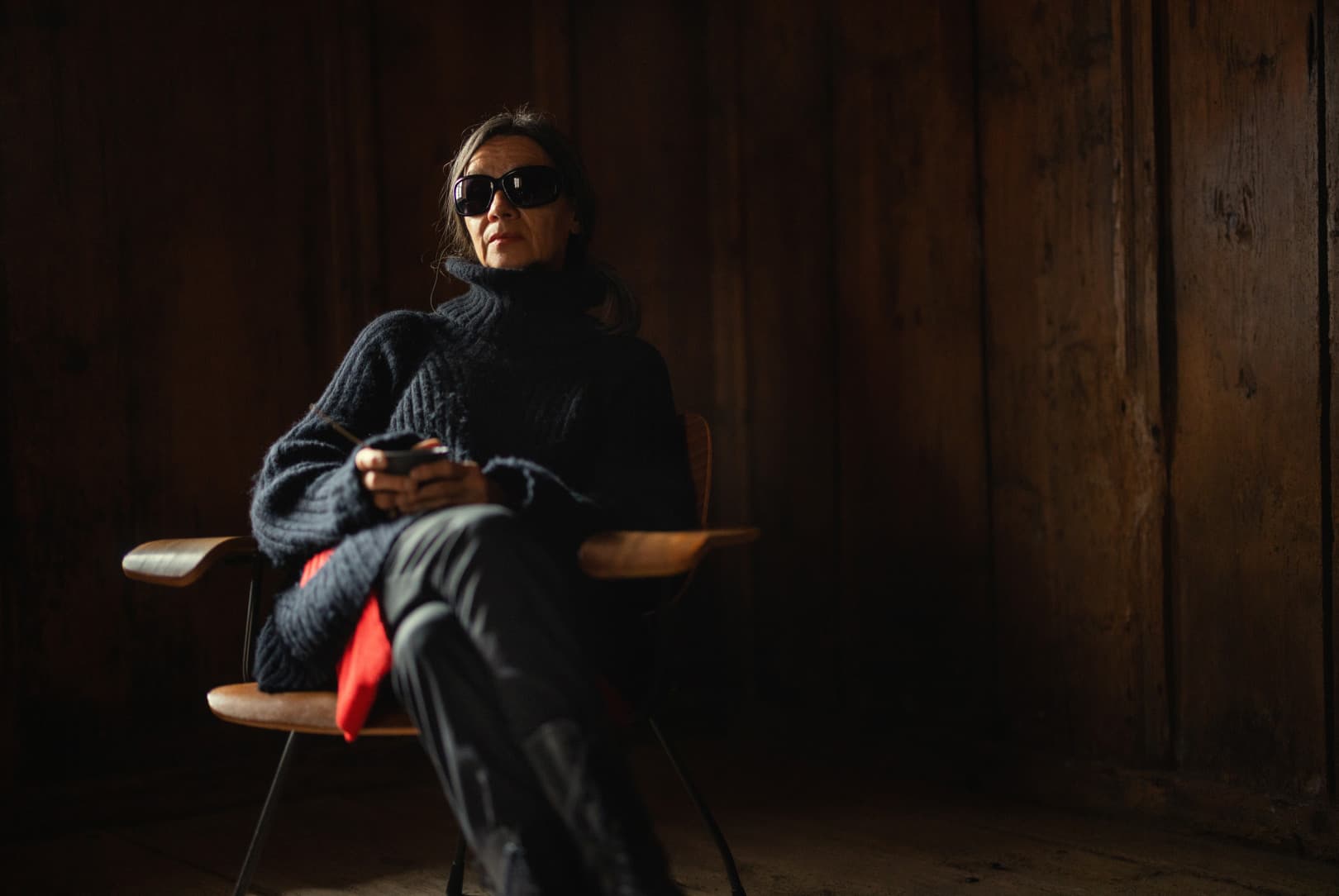

Helga Ritsch is a master of many arts, well-timed punchlines being one of them. When conversing with her, it only takes a moment to realise that she is as skilled with words as she is with porcelain, stoneware and many other materials, techniques and tools. Yet as eloquent and precise her way of expressing her thoughts might be, the artist also tends to be somewhat elusive. She is not a yes-or-no, but rather an either-this-or-that kind of person. This makes conversations with her much more interesting, but helps retain some of the mystery in which she is shrouded. “I like to think of myself as a philosopher,” she says. That term, she says, seems appropriate to her in many ways. Currently, she is expressing herself with a focus on design.
As far as facts go, Helga Ritsch initially studied art history, German philology and philosophy at the Faculty of Arts and Social Sciences at the University of Zurich – “hence my urge to put a label onto everything,” she says, half-jokingly. In 1996, shortly after the completion of her studies, she founded a language school in Winterthur that kept her busy for quite some time and that she sold later in life. In 1998, she started working as an independent ceramic artist, and from 2001 until 2006 she did an apprenticeship with the German master ceramist Mathies Schwarze where she learned and perfected wheel-throwing techniques.
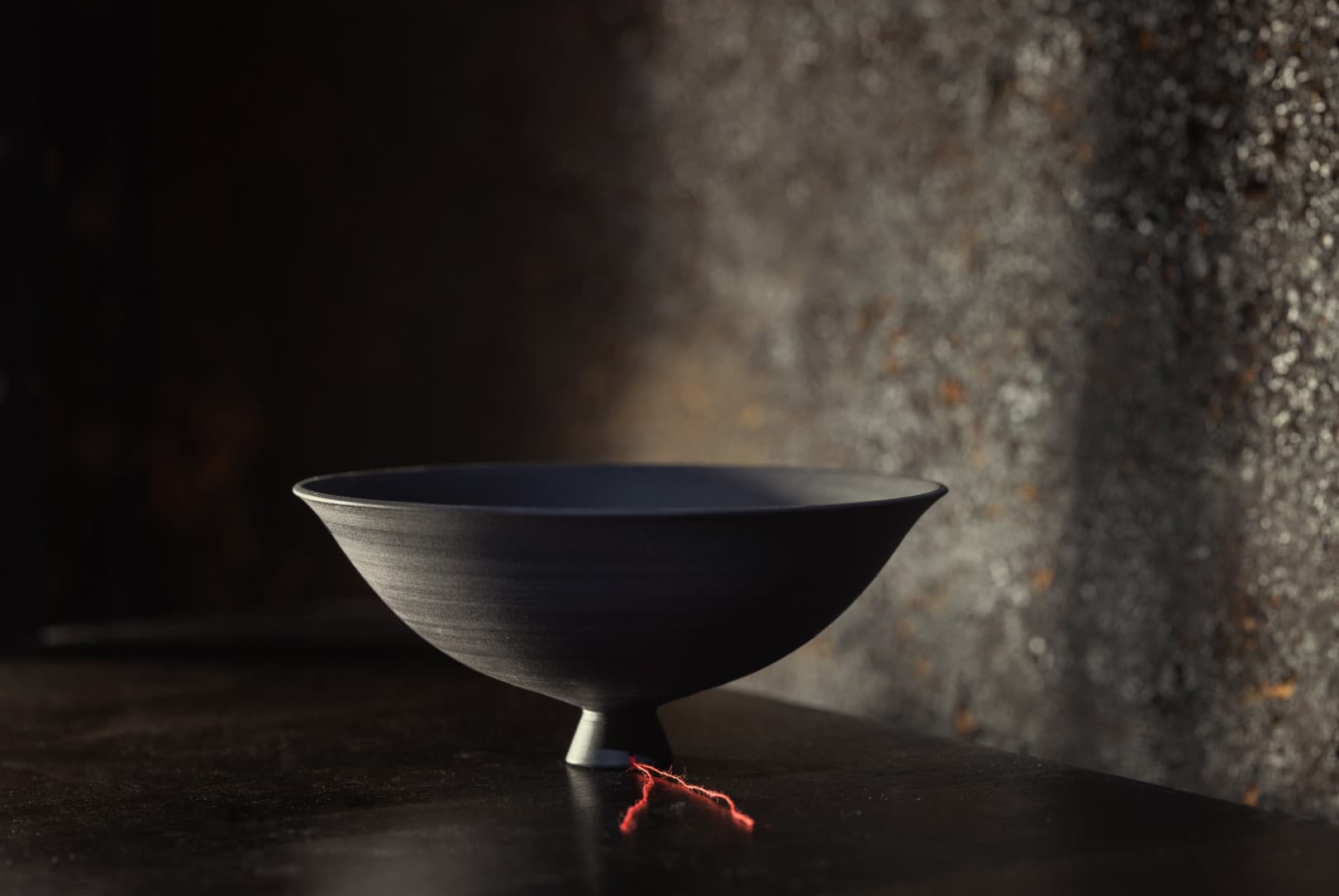
Today, her work stands out amongst other ceramicists and potters because it clearly is not your everyday off-the-shelf commodity created with the help of casting molds. These are pieces of art. They exist for their own sake and are not designed to please. Still, should one of them ever come into your possession, you will examine, admire, feel and care for it differently than you would for any other cup, vase, or bowl you own. This is also due to their uniqueness. Each item, regardless of whether it is part of a series or a one-off piece, is crafted by hand, no two objects ever being alike. Or as Helga Ritsch puts it: “Same, but not the same.”

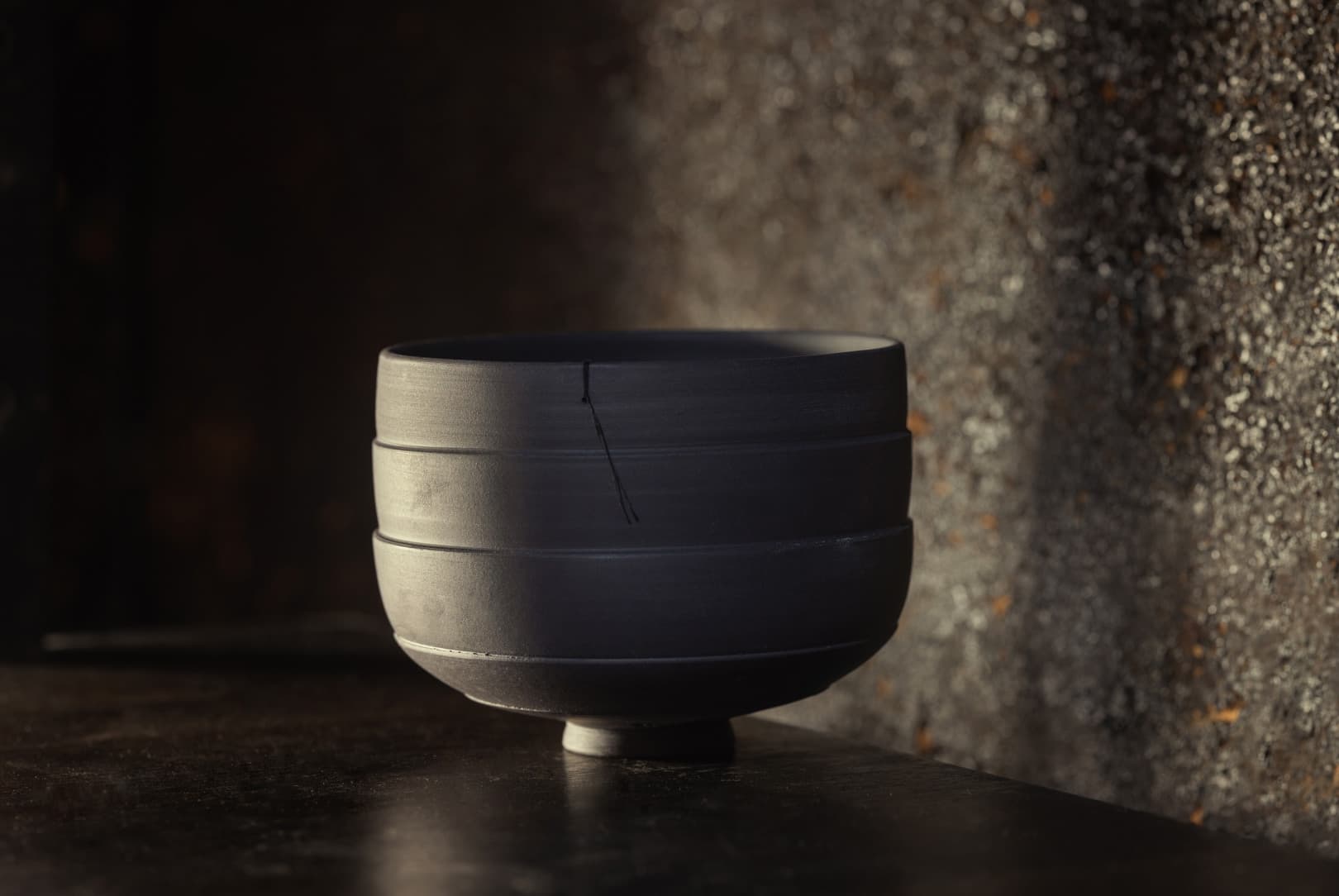
“I am someone who is strongly dependent on moods.”
Helga Ritsch, ceramic artist
Helga Ritsch has very clear memories of designing things with her own two hands from an early age. As a child, she explains, she was interested in many things, from drawing and painting to bead weaving or embroidery. She would design entire collections of velvet ribbons, for instance, as well as pieces of clothing for her beloved Barbie dolls. A little later, she started writing a lot and took a keen interest in photography, polaroid to be precise. This technique exerted a constant fascination on her – and continues to do so, as anyone casting a glance at the walls in her studio will recognise. But it is her own assessment that serves as a key to understanding the way she works, both literally and figuratively: “I am a mood person, someone who is strongly dependent on moods.”
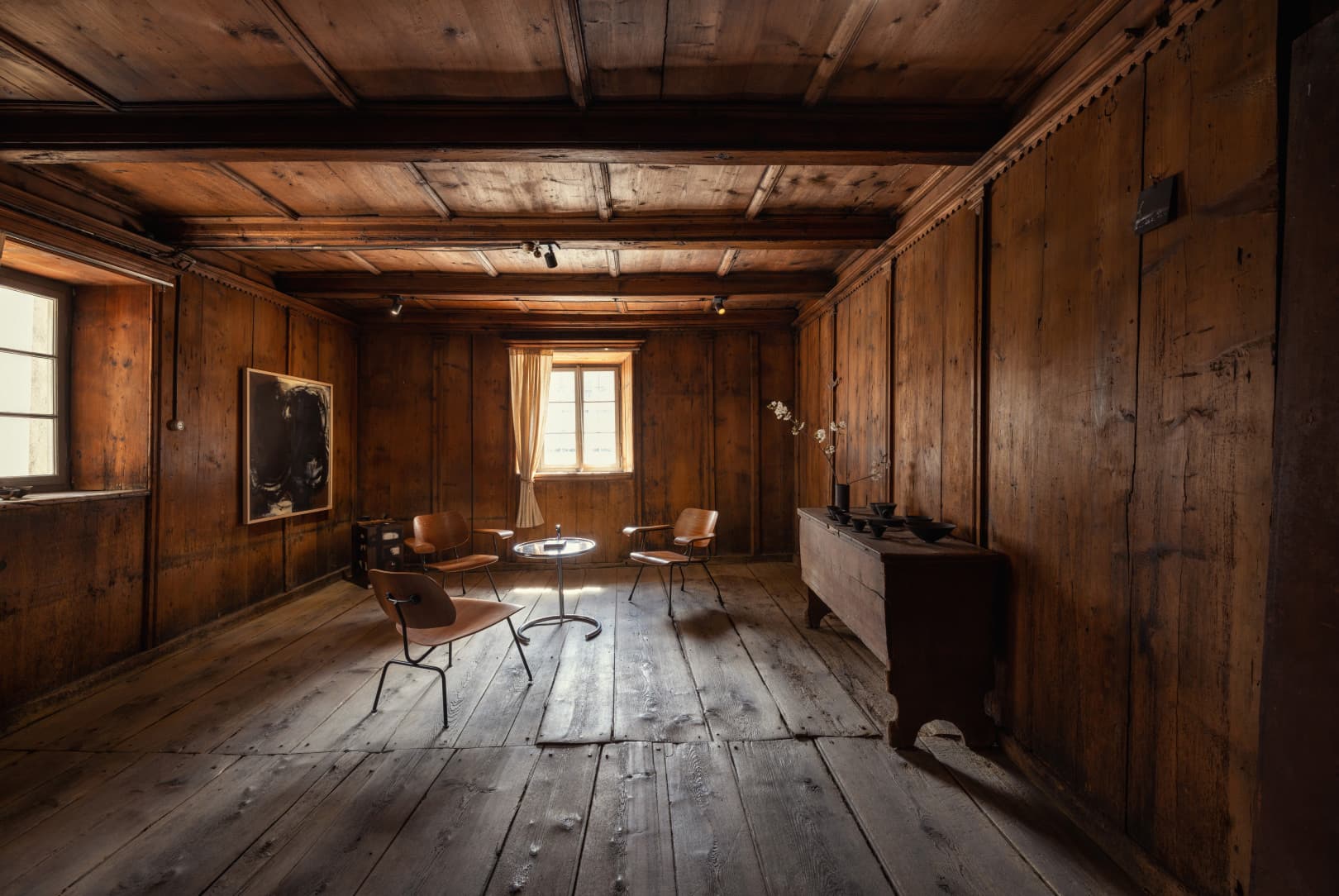
Hence, just like her creations, no two days are ever alike. There aren’t any patterns that she follows meticulously; there aren’t any well-established workflows or routines of any kind governing her schedule. “When it comes to my working rhythm, I need a lot of independence and freedom,” she says. Freedom – one of those words that obviously have a lot of meaning for her.
Feeling free, both mentally and in her work environment, is paramount for Helga Ritsch – not only to work, but to exist at all. Having found this house in Soazza and decided to give up her other studio in Zurich from early 2022 to spend even more time in this narrow mountain valley has been very liberating. “Being free also means that I can furnish and refurnish my surroundings according to my personal tastes and moods,” she says. Hanging paintings, painting walls, using a room fragrance like frankincense, choosing the right music – anyone walking through her studio house can easily spot the joy, attentiveness and talent she has for creating spaces and a unique kind of atmosphere.
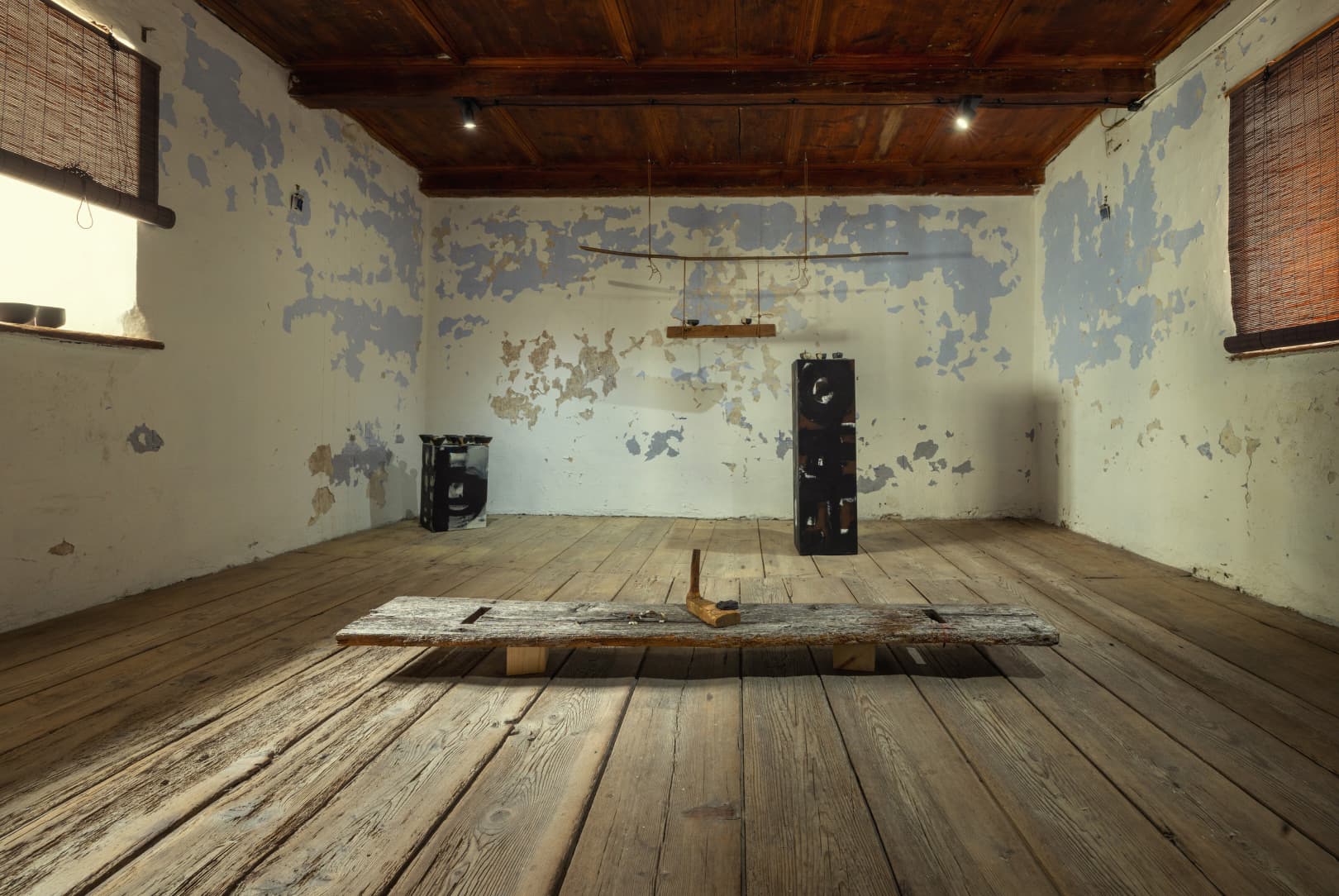

Reaching a point where she will feel completely unrestrained and devoid of expectations may take a long time. “Sometimes, days will pass before I start to actually work. But as soon as I do begin, I experience a big feeling of calm within myself.” Satisfaction, she continues, is something she rarely feels. She is happiest when there are as few things as possible that bother her. Recently, though, she often experiences a sense of joy while painting or designing something that she herself would label ‘beautiful’. By emphasising this way of feeling, she makes us realise that this kind of joy has not always been a permanent companion in her work. Much rather, it seems that it, too, is a result of the newfound freedom that has come with spending more time in Soazza.
But since the pace of her preferred way of working is not always, well, beneficial to her overall output, Helga Ritsch at one point came up with a concept that stimulates her productivity. Nowadays, she works in ‘cycles’, which are effectively collections, lines, or phases. Oddly enough, by restraining her freedom on her own terms, she has created a rhythm that leads to a certain consistency of creation as well as to new sources of creativity. Usually, there are two cycles every year, one during the summer and another in the winter.
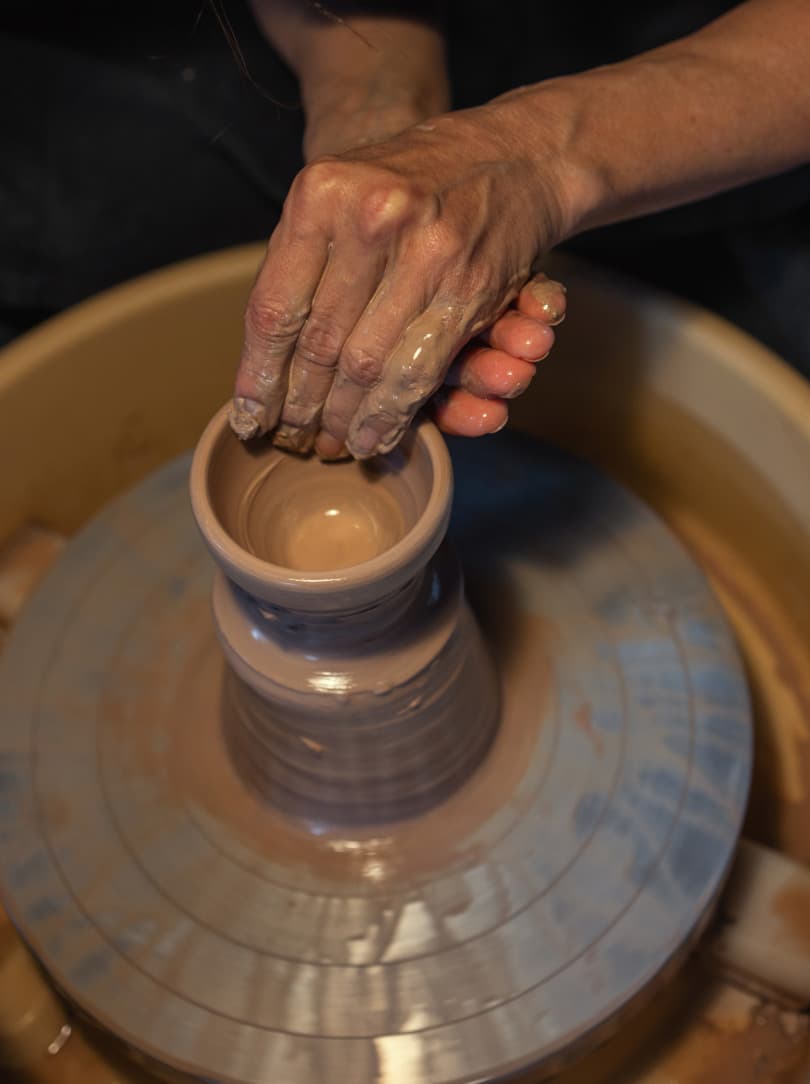


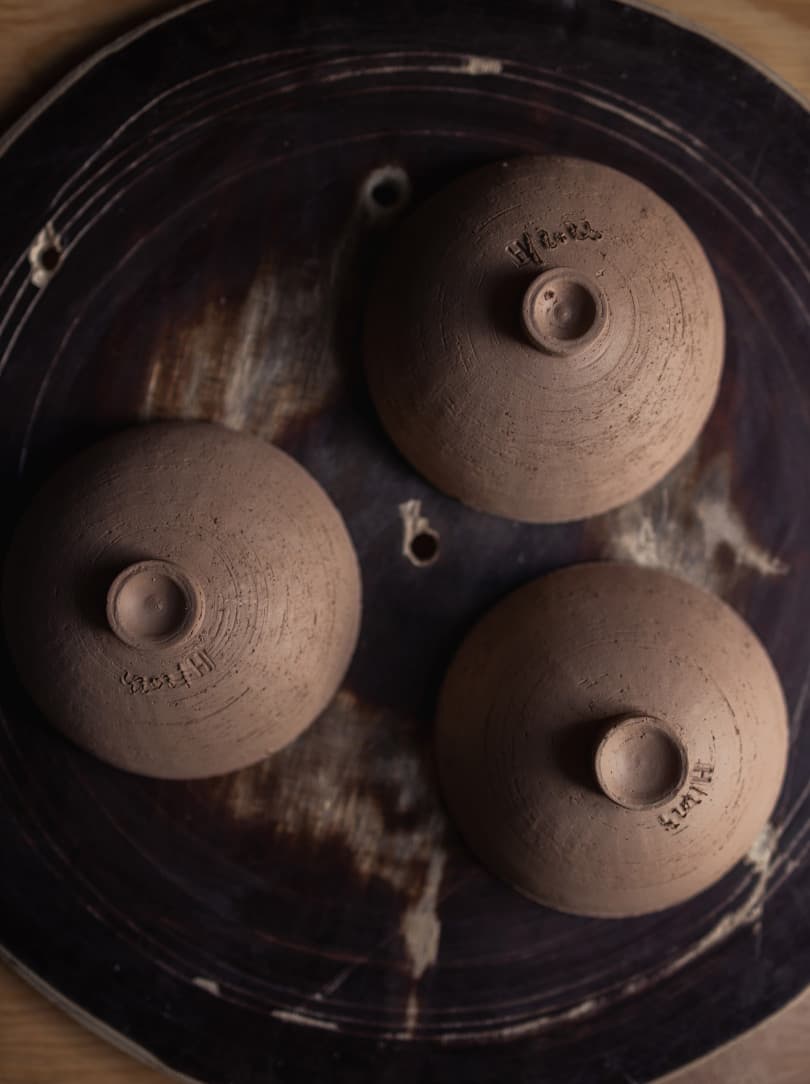
Helga Ritsch stamps every one of her pieces using a seal with the letter ‘H’ that her father gave her when she was a child and carves in the year of production. Sometimes, she also signs her collections or even comes up with a name for them. She called works for a solo exhibition in Tokyo in 2019 ‘World in White’, while an ongoing series bears the name ‘Don’t Protect Me, I Am Fragile Anyway’. And her studio collection for summer 2023 she aptly titled ‘Welcome Home?’ – the question mark putting an emphasis not only on her personal journey but also on the voyages her pieces sometimes embark on. “I don’t know whether whoever purchases my items will ever put them to use,” she says, adding that in Japan her art is met with a much deeper form of understanding than elsewhere for reasons that are hard to explain in words, but which have a lot to do with the country’s cultural and religious legacy, and the high esteem in which crafts are held in general.
If you get the rare opportunity to witness her at the potter’s wheel, it is amazing how quickly she goes from one state of mind to another. Watching her as she dynamically crafts one of her elegant vessels out of nothing but a lump of light brown throwing body is an experience that will stay with you for a long time. You don’t need to be an amateur potter to fathom how many hours she must have spent putting her skilled hands and talents to good use. After the art of crafting, she uses a kiln to fire her art up to three times. She often relies on an electric oven for which she defines customised heating programs. Other times she uses a gas furnace or a raku oven. “And sometimes I gather foliage, sawdust and chestnut shells and light them in a fire bowl,” she recounts.
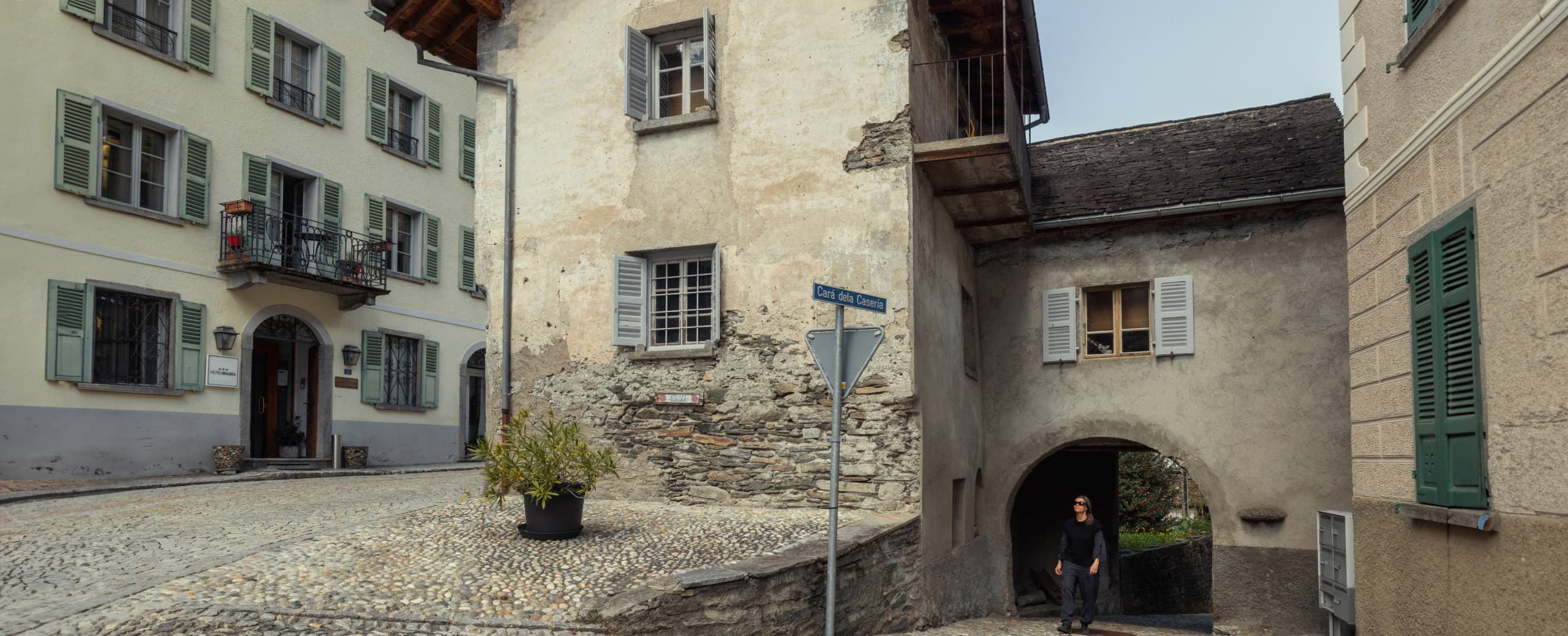
But let us take another, closer look at this peculiar building in which Helga Ritsch works. After all, this is where she spends much of her time. Ca Carmèla, as it is called, has a long history. If these walls could talk, they would tell stories from five different centuries. “This house, the second oldest in the village, was built in 1633 for two Capuchin monks,” she explains. The monks were supposed to move into the hospice in the upper part of the village, but there was a construction delay. One condition for the previous owner of Ca Carmèla was that the listed building should remain in the possession of a woman. The feature that made Helga Ritsch fall in love with the property, however, is to be found in the underground: beautiful vaulted cellars are such a rare find nowadays. The different moods that can be found in all the rooms is what she most likes about this house. “This wide variety of mood worlds is like a mirror of my own uneven character, and at the same time they help to balance it out.”

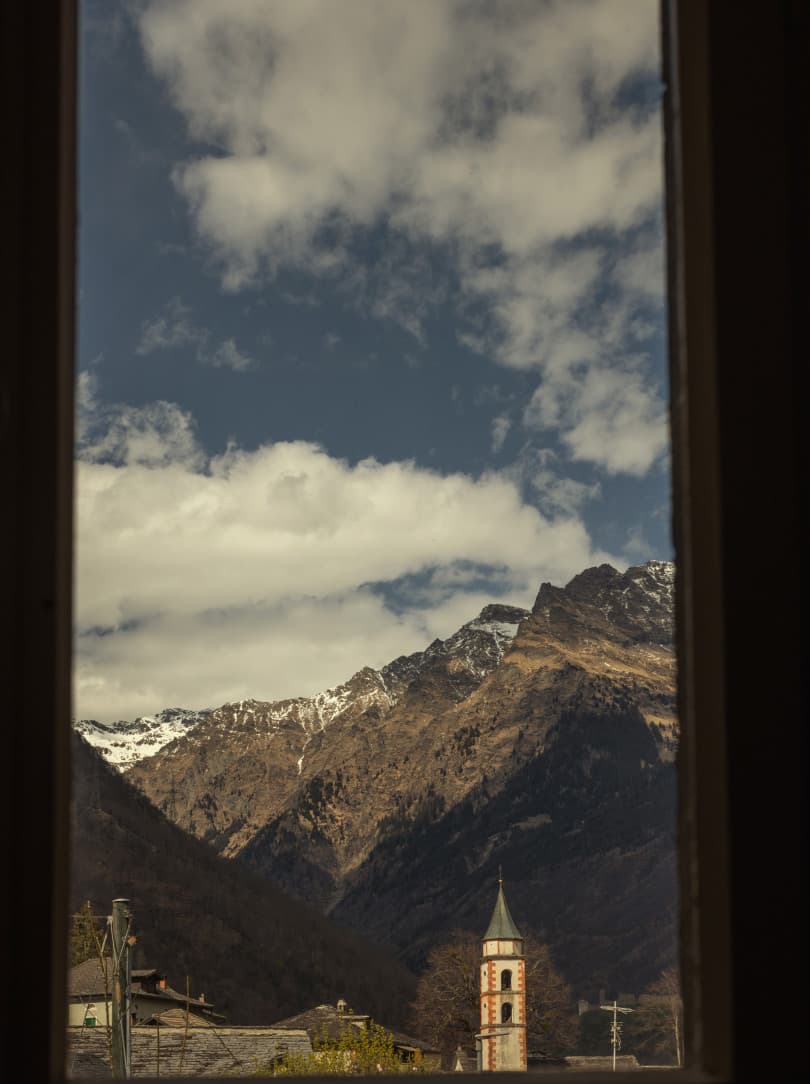
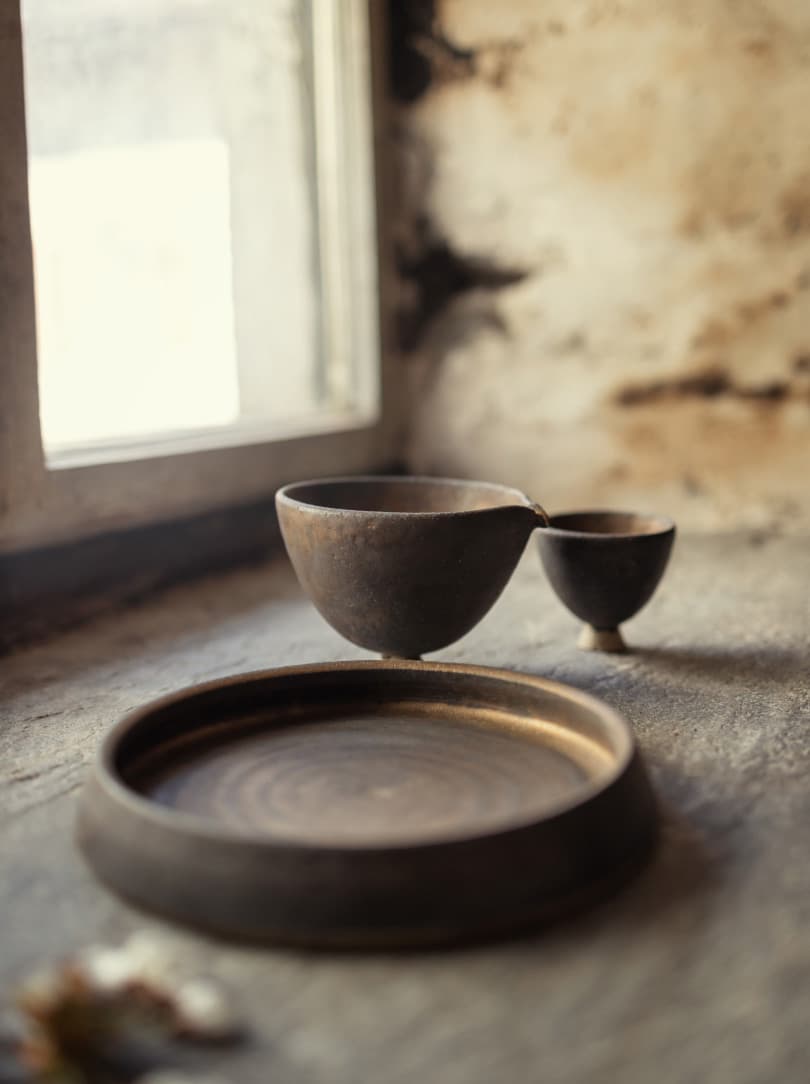
By using this house as a studio and gallery, Helga Ritsch is continuously and relentlessly changing its inner life. “I am interested in recycling and renewing this house, or, as I like to describe it, washing it,” she says, once again making clear that she prefers tidiness over chaos. And while she does not have a specific style and is, as she herself says, driven by rather spontaneous inspirations, there is an invisible force that makes all of her works and installations unmistakably hers. It is striking how clear her general aesthetic vision is – despite its lack of homogeneity.
The fact that red or black silk and cotton threads garnish many of her pieces could easily lead one to assume that there is another, proverbial thread running through her entire oeuvre. Well, this is true as much as it is not. And as evasive and tautological as this might sound, it describes the nature of the artist quite accurately, because Helga Ritsch, you could say, does not like to think in terms of right or wrong. Much rather, she tends to put a lot of emphasis on what feels right and what does not. “A decision I make today, tomorrow I would make differently,” she says, adding, “I like to play.”
An exclusive selection of Helga Ritsch’s timeless and one-of-a-kind creations can be found in our AGOBAY store. We are proud to be able to offer some of her older works, and some of her newest single pieces biannually. We pay close attention to the genesis of every cycle and will publish additional stories whenever another cycle of production has been completed, so be sure to check in regularly in order to keep track of the artist’s latest works.


